中小企业销售管理系统的设计与实现(ASP.NET,SQL)(任务书,开题报告,论文说明书14000字,程序代码,SQLserver数据库)
摘要
中小企业对我国的经济发展具有重要意义,目前我国的中小企业数量繁多,分布区域广泛,行业跨度比较大。随着电子商务的兴起以及全球经济的一体化发展,中小型企业之间的竞争将愈演愈烈。互联网络及电子商务的突飞猛进打破了时间和空间的局限性,给中小型企业的发展带来了更多的机会,但也加大了企业之间的竞争强度。中小型企业已经到了必须改变其经营管理模式的时候,从而提高企业的运营效率。目前,我国中小型企业的信息化水平相对还比较低,与国外企业相比,还只是处于刚刚起步的阶段。随着科学技术的发展,电脑和互联网的应用管理日益简化,互联网知识迅速普及,同时市场经济的发展飞速多变,竞争非常激烈,中小型企业运用信息化技术对采购、仓库、销售出货等各个环节进行现代化管理也已经成为未来必然的趋势。
本系统以超市为例,实现如下主要功能:采购管理,库存管理,销售管理,报损管理,基础资料维护,初期库存管理,系统管理等几个功能模块。
本文首先进行的是系统的需求分析,得出需要建立的各个系统模块。使用SQL Server 2014数据库作为系统运行所必须的后台数据库,使用VisualStudio2013集成开发环境配合C#编程语言开发一套适用于中小型企业的销售管理系统。
关键词:中小企业;销售管理系统;SQL Server数据库;asp.net;B/S
Abstract
SMEs are of great significance to China's economic development. At present, the number of SMEs in China is wide and the distribution area is wide and the industry span is relatively large. With the rise of e-commerce and the integration of the global economy, the competition between small and medium enterprises will intensify. Internet and e-commerce by leaps and bounds to break the limitations of time and space, to the development of small and medium enterprises have brought more opportunities, but also increased the intensity of competition between enterprises. Small and medium enterprises have to change their business management model, so as to improve the operational efficiency of enterprises. At present, the level of information technology in China's small and medium enterprises is still relatively low, compared with foreign enterprises, but also just in the beginning stage. With the development of science and technology, computer and Internet application management is becoming increasingly popular, the rapid popularization of Internet knowledge, while the rapid development of market economy, competitive, enterprise information technology management purchase, inventory, sales and many other links have become Trend and necessity.
The system to supermarkets, for example, to achieve the following main functions : purchasing management, inventory management, sales management, reported loss management, basic data maintenance, initial inventory management, system management and several functional modules.
This paper first carries out the system needs analysis, obtained need to establish the various system modules. Use the SQL Server 2014 database as a backstage database that is necessary for the system to run, and use the VisualStudio2013 integrated development environment to develop a set of sales management system for small and medium enterprises with C # programming language.
Keywords: SMEs, sales management system, SQL Server database, asp.net, B/S
系统模块总体设计
本系统总共包含七个大的功能模块,从系统表面上来看这些功能之间是各自独立存在的,然而,在后台数据库层面上,这些模块之间是紧紧联系在一起的,每个功能访问的其实是同一个数据库,只是表名不相同罢了,表之间都是有逻辑关联的。各个模块的功能是按照需求分析调研中收集到的需求来设计开发的。
系统中的七大模块分别为:采购进货,商品销售,商品库存,商品报损,基础资料维护,系统配置维护,系统维护。
各个功能模块具体的子模块如下:
采购进货功能模块包括:采购订单,采购退货,采购信息修改,退货信息修改,采购统计五大子功能。
销售功能模块包括:销售出库,销售退货,退货信息,销售报表,利润分析五大子模块。
库存模块包括:商品入库,商品出库,实时库存报表,入库报表,出库报表五大子模块。
报损功能模块包括:新增报损数据,报损数据管理两大子功能。
基础资料维护功能包括:供应商信息维护,商品资料维护,商品类别维护,仓库信息维护,员工信息维护,部门信息维护六大子模块。
系统配置功能模块包括:初期库存管理模块。
系统管理功能模块包括:添加登录账户,登录账户维护,修改密码三大子模块。
开发环境:Microsoft visual studio
数据库工具:SQL Server
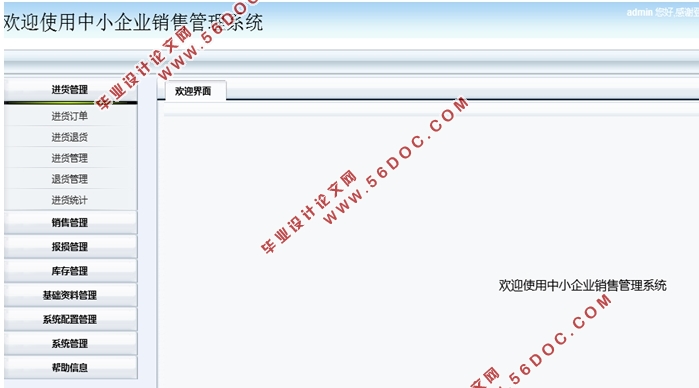
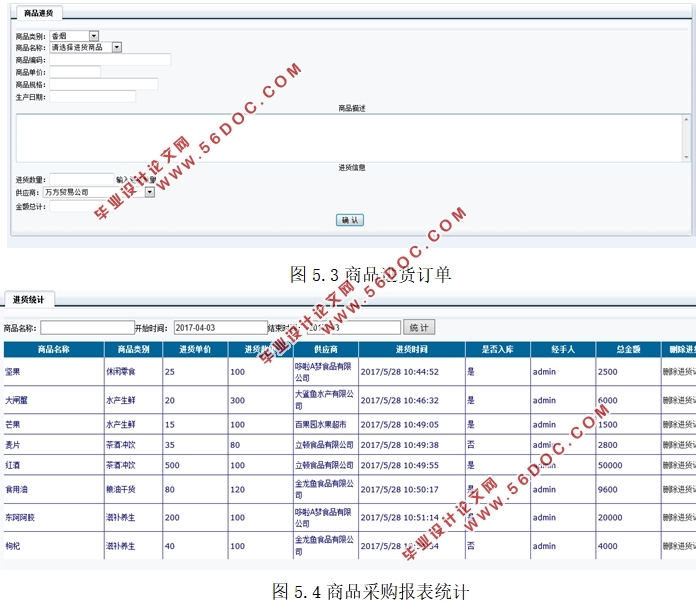
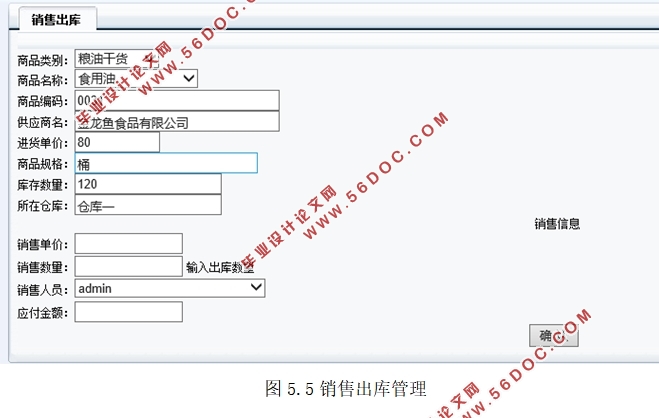
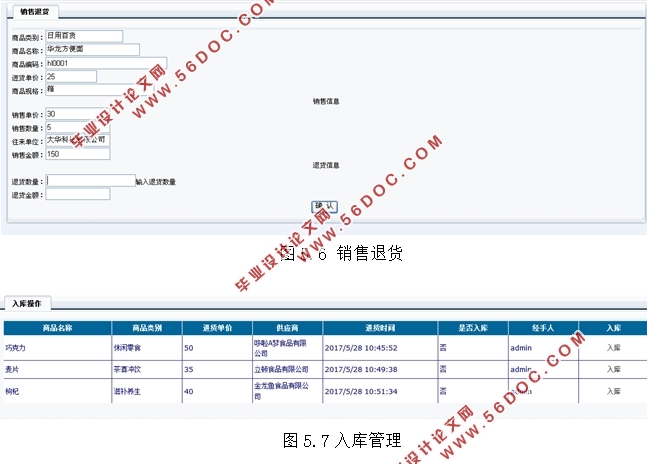

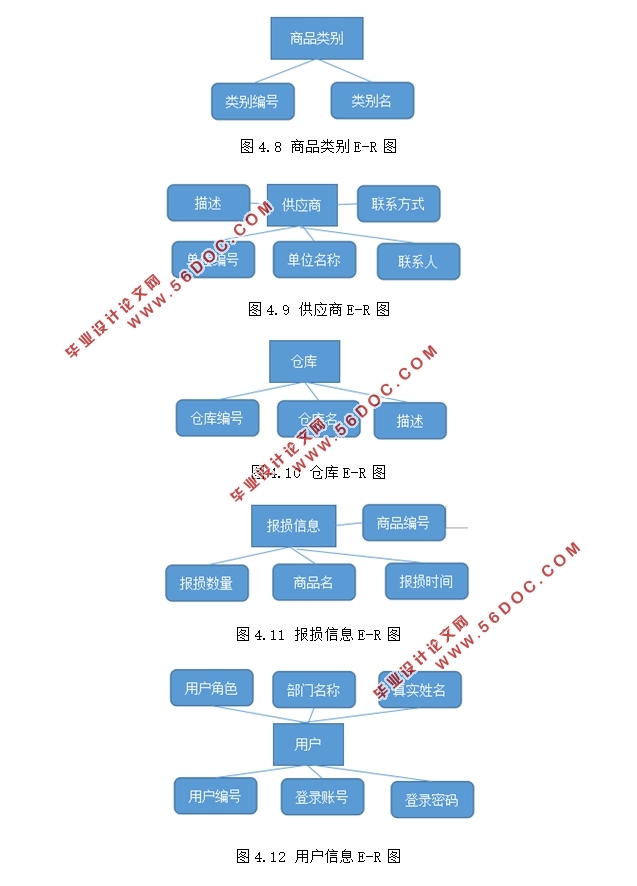
目 录
1 绪论 1
1.1开发背景 1
1.2目的和意义 1
1.3系统设计思想 1
2.1可行性分析 3
2.1.1技术可行性 3
2.1.2法律可行性 3
2.1.3组织管理上的可行性 3
2.1.4经济可行性 3
2.1.5运行可行性 4
2.2开发系统的必要性 4
2.3数据流图 5
3开发工具简介 8
3.1 ASP.NET概述 8
3.2 ASP.NET的优点 8
3.3 C#语言简介 9
3.4 SQL Server 2014数据库介绍 9
4 系统设计 11
4.1 MIS系统的产生和发展情况 11
4.2 系统流程分析 11
4.3系统模块总体设计 12
4.4 数据库设计 13
4.4.1数据库设计概述 13
4.4.2数据分析 14
4.4.3数据库的详细设计 16
5 系统程序设计及实现 22
5.1 系统登录面设计 22
5.2 系统主界面设计 23
5.3 采购管理功能设计 24
5.4 销售管理功能设计 26
5.5 库存管理功能设计 28
5.6 报损信息管理 30
5.7 基础资料管理功能设计 31
5.8 系统配置管理功能设计 33
5.9 系统管理功能设计 34
6 结论 38
参考文献 39
致谢 40
|













